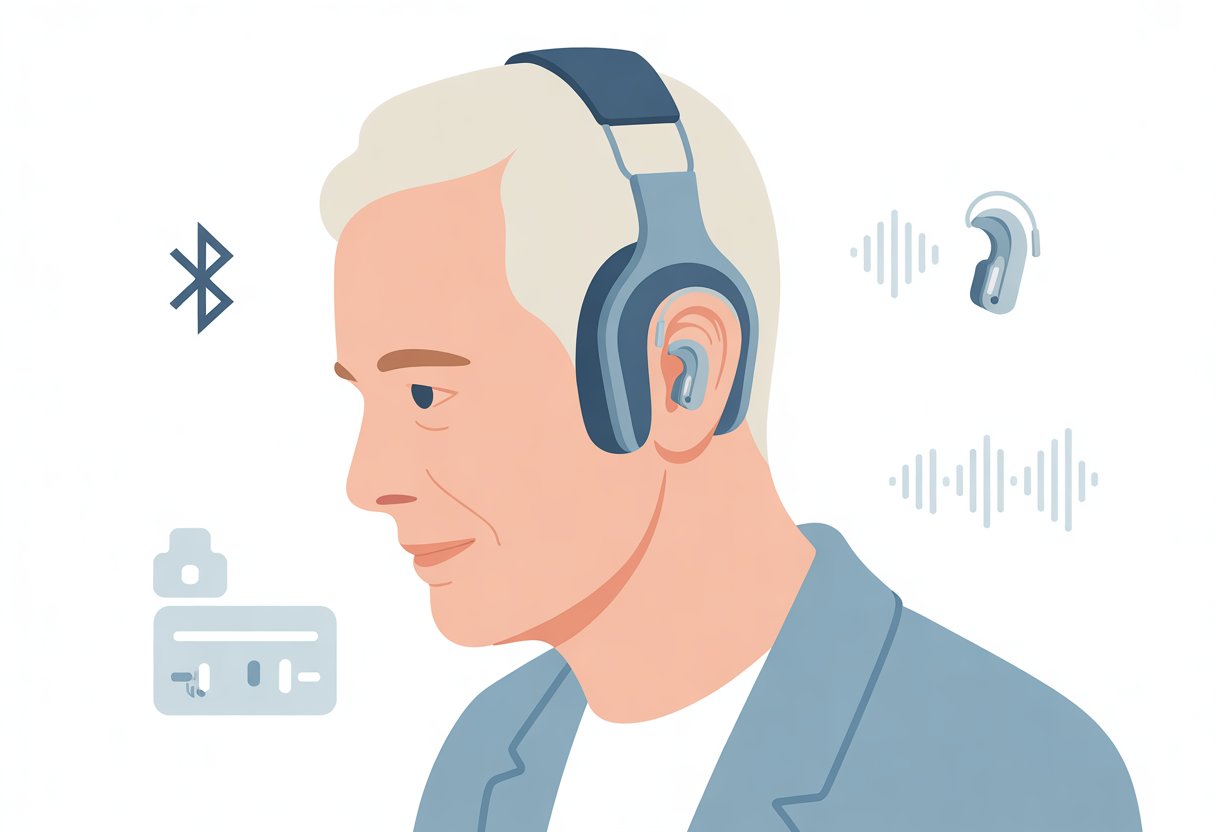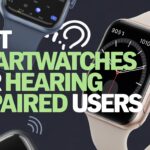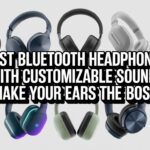We’ve all been there—wanting to listen to our favorite songs, catch a phone call, or watch a movie, but not knowing what to do when we’re wearing hearing aids. Music through headphones and hearing aids used to be a recipe for frustration, but honestly, things have gotten way better.
Good news: we can use Bluetooth headphones with our hearing aids, and it’s really not rocket science. With the right setup, we get clear sound from our Bluetooth headphones right alongside our hearing aids.

You might’ve seen someone fiddling with their gadgets, looking like they’re prepping for liftoff, but connecting Bluetooth headphones to hearing aids just takes a few steps. It can make daily life way easier, letting us hear what we want, when we want, and with way less hassle.
Let’s figure out how these things can get along without turning our ears into a high-tech circus. Whether we’re after comfort, clarity, or just some peace and quiet, there’s a way to make it all work together. Maybe we’ll even have a little fun with it.
Understanding Bluetooth Headphones and Hearing Aids
Bluetooth lets us stream music, phone calls, and even those awkward voice memos straight to our ears—no wires needed. To make this tech work with our hearing aids, we need devices that play well together and a little know-how.
Let’s break it down so we don’t get stuck in pairing nightmares and can actually enjoy the good stuff.
How Bluetooth Technology Works
Bluetooth is basically the wireless sidekick we never realized we needed. It creates a short-range connection between gadgets—like our phones and those “hearing aid compatible headsets.” When we flip on Bluetooth in both devices, they start searching for each other, kind of like two penguins in a crowd.
Once they find each other, they “pair up.” After that, they can share sound—calls, podcasts, or the latest pop hit—directly into our hearing aids or headphones. This wireless magic means we can finally say goodbye to tangled cords.
Bluetooth works best within about 30 feet, so we don’t have to be glued to our devices. Not all Bluetooth is the same, though.
There are several versions and profiles. Most hearing aids use Bluetooth Low Energy (BLE) because it saves battery and keeps our tunes going longer. If only it could make us coffee, too.
Types of Hearing Aids Compatible with Bluetooth
Not every hearing aid is ready for a wireless upgrade. Older or basic models might leave us out in the cold.
Many newer hearing aids now have built-in Bluetooth features. There are two main types:
- Direct Bluetooth hearing aids: These connect straight to our phones and devices, no extra gadgets needed.
- Bluetooth with streamer: Some hearing aids need a separate gadget (a streamer) that acts as a go-between for our aids and the headset or phone.
Here’s a quick look at common hearing aid types:
| Hearing Aid Type | Bluetooth? | What’s Needed |
|---|---|---|
| Behind-the-ear (BTE) | Often built-in | Sometimes streamer |
| In-the-ear (ITE) | Sometimes built-in | Sometimes streamer |
| Completely-in-canal (CIC) | Rare | Usually not available |
Before buying headphones or planning a binge-listen, let’s check our hearing aid’s specs.
Why Compatibility Matters
Trying to pair gadgets that don’t get along is just frustrating. It’s like shoving two puzzle pieces together that simply don’t fit.
When our Bluetooth hearing aids and headphones play nice, everything just works. If not, we’ll get sound delays, connection drops, or just… nothing.
For those of us with hearing loss, having tech that works together saves time and stress. We skip the missed calls, the incomplete streaming, and the endless tech support hold music. Picking gear that’s made to work together just keeps our ears, and our patience, in good shape.
Step-by-Step Guide: Connecting Bluetooth Headphones to Hearing Aids
Let’s get into the nitty-gritty and untangle this tech mess. Whether we’re streaming from a smartphone, using a laptop, or sticking with an old-school audio jack, it’s totally possible to use Bluetooth headphones with hearing aids.
We just need the right steps to pull it off—no comedy of errors required.
Pairing with Smartphones and Tablets
Most of us have our phones nearby anyway, so let’s start there. To get Bluetooth headphones and hearing aids working together, we open Settings on the device and look for the Bluetooth option.
We make sure Bluetooth is on. Headphones need to be in pairing mode (usually by holding the power button until a light flashes—sometimes there’s even a sound).
For hearing aid users, we might need to restart our hearing aids or follow the manufacturer’s instructions, so it’s worth checking the manual or looking up tips like these steps for hearing aids and Bluetooth.
Once both devices are in pairing mode, they’ll pop up in the list of available devices. We tap the name of our headphones or hearing aids and follow any onscreen instructions.
After that, we test out some music, a call, or maybe a quick YouTube video (just keep the volume reasonable).
Pairing with Laptops and Computers
Laptops sometimes feel like they’re running on decaf, but here’s how to get things going: we head into our computer’s Bluetooth settings (usually under Settings or Preferences).
We make both the laptop and headphones discoverable. If our hearing aids are Bluetooth-capable, we repeat the discovery process as above.
PC and Mac users will see a list of devices—just make sure we’re picking the right one (unless we want to connect to the neighbor’s speakers by accident). Then, we click Pair.
If there’s a pairing code, we confirm it. For older computers, a USB Bluetooth adapter might save us some headaches. If things get weird, try this troubleshooting Bluetooth guide.
Connecting via Audio Jack or Accessories
Not every device knows what Bluetooth is. That’s where the trusty audio jack or some special accessories come in handy.
Some hearing aids or headphones include an auxiliary cable, so we can plug right in. If not, there are Bluetooth streamers—tiny gadgets that connect hearing aids with headphones, tablets, or other audio sources.
We just plug the streamer into the audio output and pair everything up. For wired connections, match the cable ends to the jacks—no need to force anything.
Accessories like TV streamers or FM systems give us extra options, so if we want the full “tech geek” experience, maybe ask our audiologist.
Telecoil and Other Compatibility Solutions
Sometimes, using regular Bluetooth headphones with hearing aids just doesn’t work out. Telecoil features and hearing aid compatible headsets give us creative ways to get clear audio without all the hassle.
Using Telecoil with Bluetooth Devices
The telecoil, or T-coil, is that little copper wire inside many hearing aids. It picks up magnetic signals sent from phones or loop systems, cutting through background noise like a ninja.
Most Bluetooth headphones don’t naturally play nice with telecoils, since they send sound through the air, not electromagnetism. If our hearing aids have a T-switch, we can connect to phones and headsets that claim to be hearing aid compatible.
These usually have a built-in telecoil or work well with one. The key is to look for headsets or accessories that mention T-coil support or “hearing aid compatible” on the box.
Some wired headsets let us switch our hearing aids to telecoil mode and plug into a phone or computer. Suddenly, sound goes straight to our ears—no fuss.
Exploring Jabra GN2100 Telecoil and Alternatives
The Jabra GN2100 Telecoil headset is a bit of a unicorn. It’s made for those of us with the T-coil feature and wanting clearer calls at work.
This headset uses an inductive coupler, sending signals right to the telecoil in our hearing aid, so there’s less feedback and way fewer “Can you hear me now?” moments.
But the GN2100 isn’t the only option. Other brands offer headsets or neckloops built for T-coil users. These devices plug into our phone or computer and make a magnetic field our hearing aid can pick up.
It’s important to check that the headset is compatible with T-coil hearing aids, not just labeled “hearing aid compatible.” Most of all, we want a headset that lets us sound great and not miss a word.
Selecting the Best Bluetooth Headphones for Hearing Aid Users
Picking Bluetooth headphones when we wear hearing aids is a bit like choosing the right hat—comfort matters, the sound shouldn’t wobble, and the battery shouldn’t die at the worst time. We want headphones that play nice with our hearing aids and don’t squeeze our ears.
Sound Quality and Comfort Considerations
Let’s be real: if headphones sound bad, we’re not going to use them. For us, sound quality means more than just clear music—it’s about hearing every beep, bloop, and family story.
Over-ear headphones are usually best for people with behind-the-ear hearing aids because they cover our ears without pressing down on our little audio helpers. This also helps stop feedback squeals.
If we wear in-the-ear hearing aids, on-ear or even in-ear earbuds can work well.
Key things to look for:
- Soft, padded cushions—no one likes sore ears
- Adjustable headbands (because heads come in all shapes)
- Noise canceling features, but nothing so strong it blocks out important sounds
For extra comfort, let’s pick headphones that don’t weigh a ton.
Monoaural vs. Stereo Headsets
Sometimes, we don’t need stereo sound in both ears all day. That’s where monaural headsets come in. They let us keep one ear open to the world (and the barking dog).
Monaural sets are great if we need to hear both our headphones and what’s happening around us, especially with some hearing aid types.
But if we want the full sound experience—music, movies, the works—stereo headsets are the way to go. Many over-ear and some modern earbuds give us crisp, balanced stereo sound for podcasts, movies, and music.
Quick comparison:
| Headset Type | Pros | Cons |
|---|---|---|
| Monaural | Open ear, good for calls, less ear fatigue | Not immersive for music |
| Stereo | Rich music, full audio experience | Less awareness of surrounds |
The best choice really depends on how we like to listen and what kind of hearing aids we’re using.
Battery Life and Recharging Habits
Nobody wants headphones dying before the movie’s over. We should look for battery life that matches our routines and doesn’t send us on a charger hunt more than our car keys.
Some Bluetooth headphones give us up to 30 hours per charge. True wireless earbuds? Maybe 5-8 hours, though the charging case helps for quick boosts. If you forget to plug in (and honestly, who doesn’t?), fast charging can save the day.
A few tips:
- Check battery specs—don’t just believe wild marketing
- Think about how often you’ll use them (all-day marathons or just quick coffee breaks)
- If you travel, pick a pair that uses USB-C so you’re not stuck with weird cables
Headphones should last at least as long as our patience during family game night. We want to listen more and charge less—unless charging is just an excuse for a nap. If you’re looking for headphones that work with hearing aids, this guide breaks down the options by style and features.
Device Compatibility by Brand
Getting Bluetooth headphones and hearing aids to play nice feels like a puzzle with a few missing pieces. The way we connect depends a lot on the phone we use, so let’s walk through the steps for both Android and Apple.
Using Bluetooth Headphones with Android Devices
Android phones keep us on our toes, especially with Bluetooth. First, we need to make sure both our hearing aids and headphones are Bluetooth-compatible and support streaming. Most newer Androids let us connect to several devices at once, but sometimes our patience runs out before the phone does.
Here’s what usually works:
- Turn on Bluetooth for both hearing aids and headphones.
- Open “Settings” on your Android and tap Bluetooth.
- Pair the hearing aids first—they might show up as “Hearing Aid” or by brand.
- Once that’s done, pair your Bluetooth headphones the same way.
If your hearing aids have built-in Bluetooth, you can stream calls and music right to them, almost like wireless earbuds. If things go sideways, check official guides or try the classic “turn it off and on again” move. For more details, see this guide about Bluetooth hearing aids for Android.
Pairing with iPhone and Apple Devices
Pairing with Apple usually feels smoother—unless your devices just aren’t feeling it that day. Most iPhones and iPads handle Bluetooth hearing aids pretty well, and lots of brands support Apple’s Made for iPhone (MFi) program.
To connect, do this:
- Go to Settings > Accessibility > Hearing Devices on your iPhone.
- Put your hearing aids in “pairing mode” (yep, the manual probably explains how).
- Wait for them to show up under “Hearing Devices” and tap to pair.
Once hearing aids are connected, pair Bluetooth headphones under the usual Bluetooth settings. On iPhone, you can even route sound separately—take a call through your hearing aids, stream music to headphones. If only we got points for every device we pair! For a practical walkthrough, check out this article on connecting hearing aids to iPhone via Bluetooth.
Troubleshooting Common Issues
Sometimes Bluetooth headphones and hearing aids seem to have their own agenda. We’ve all dealt with dropped sound, weird buzzing, and devices that refuse to connect.
Audio Dropouts and Interference
Static, popping, or disappearing sound? It’s easy to blame ghosts—or maybe squirrels. Usually, it’s just Bluetooth being finicky. Wireless signals get interrupted if we wander too far or put thick walls between us and our devices.
Here’s how I handle it:
- Stay Close: Keep headphones and hearing aids near the device.
- Limit Barriers: Dodge steel doors, brick walls, or other “Bluetooth Kryptonite.”
- Turn off Nearby Devices: Too many Bluetooth gadgets can cause chaos.
- Restart: The “turn it off and on again” trick actually works more often than you’d think.
For more help, Bluetooth hearing aids have extra troubleshooting tips.
Resolving Connection Failures
If devices won’t pair, it’s not personal—it’s just Bluetooth acting up. Headphones and hearing aids need to be in “pairing mode,” and sometimes we just need to forget and reconnect them.
Try these quick fixes:
- Check Pairing Mode: Devices usually flash or beep when ready.
- Restart Everything: Power off both headphones and hearing aids, then try again.
- Forget and Re-Pair: Remove the device from Bluetooth settings, then add it back.
- Update Firmware: Old software can mess things up.
You can find more steps in Bluetooth hearing aid troubleshooting guides. Sometimes you just have to show those gadgets who’s boss.
Shopping Tips for the Perfect Bluetooth Accessories
Finding Bluetooth accessories that actually work with hearing aids can be a headache. We need the right fit, features, and a decent price—nobody wants to pay extra for something that won’t connect.
What to Look for in a Bluetooth Accessory
First thing’s first: not all Bluetooth gadgets get along with hearing aids. Look for ones that work well with your model, especially if you use behind-the-ear (BTE) aids. Over-the-ear headphones with big, soft cushions usually feel better and don’t mess with your devices. Skip tiny earbuds that tangle or press too hard.
Battery life matters—a lot. Nothing kills a playlist faster than headphones that quit after an hour. Go for accessories with at least 8 hours of playtime so you’re not always charging. Most people want adjustable volume, crisp sound, and easy controls—ideally, buttons you can find without looking.
Multipoint pairing is a lifesaver. It lets you connect to more than one device at once. Some newer hearing aids stream Bluetooth audio directly, so you can skip headphones entirely and feel like a secret agent with invisible speakers. For more ideas, check out using headphones with hearing aids.
Where to Shop and Save Big
Let’s be real: the world—both online and off—is packed with Bluetooth accessories. Some are great, others are just plain weird.
If you want the best shopping experience, stick with established electronics stores, hearing aid shops, or online retailers that have honest customer reviews.
Many hearing aid centers actually stock Bluetooth-compatible devices, and they’ve already tested these for comfort and sound quality. Sure, these might cost a bit more, but at least you won’t end up with headphone-shaped paperweights.
Online retailers usually throw out bigger discounts, so it makes sense to compare prices before you hit “buy.” Here’s a quick table:
| Shop Type | Perks | Watch Outs |
|---|---|---|
| Local Retailers | Try before you buy | Fewer discounts |
| Online Retailers | More variety, better deals | Risk of bad matches |
| Hearing Aid Centers | Perfect fit for devices | Might be pricier |
Always check the return policies. Sometimes those “perfect” Bluetooth speakers or headphones really are perfect, and sometimes… well, let’s just say they’re not.
Happy shopping!
- How to connect Bluetooth headphones to a Chromebook Without Summoning Tech Support - December 15, 2025
- Best Fitness Trackers for EMS Workers: Because Your Heart Rate Isn’t the Only Thing Racing - December 15, 2025
- Why do my Bluetooth headphones not skip tracks? Tech tantrums and other musical mysteries - December 14, 2025






